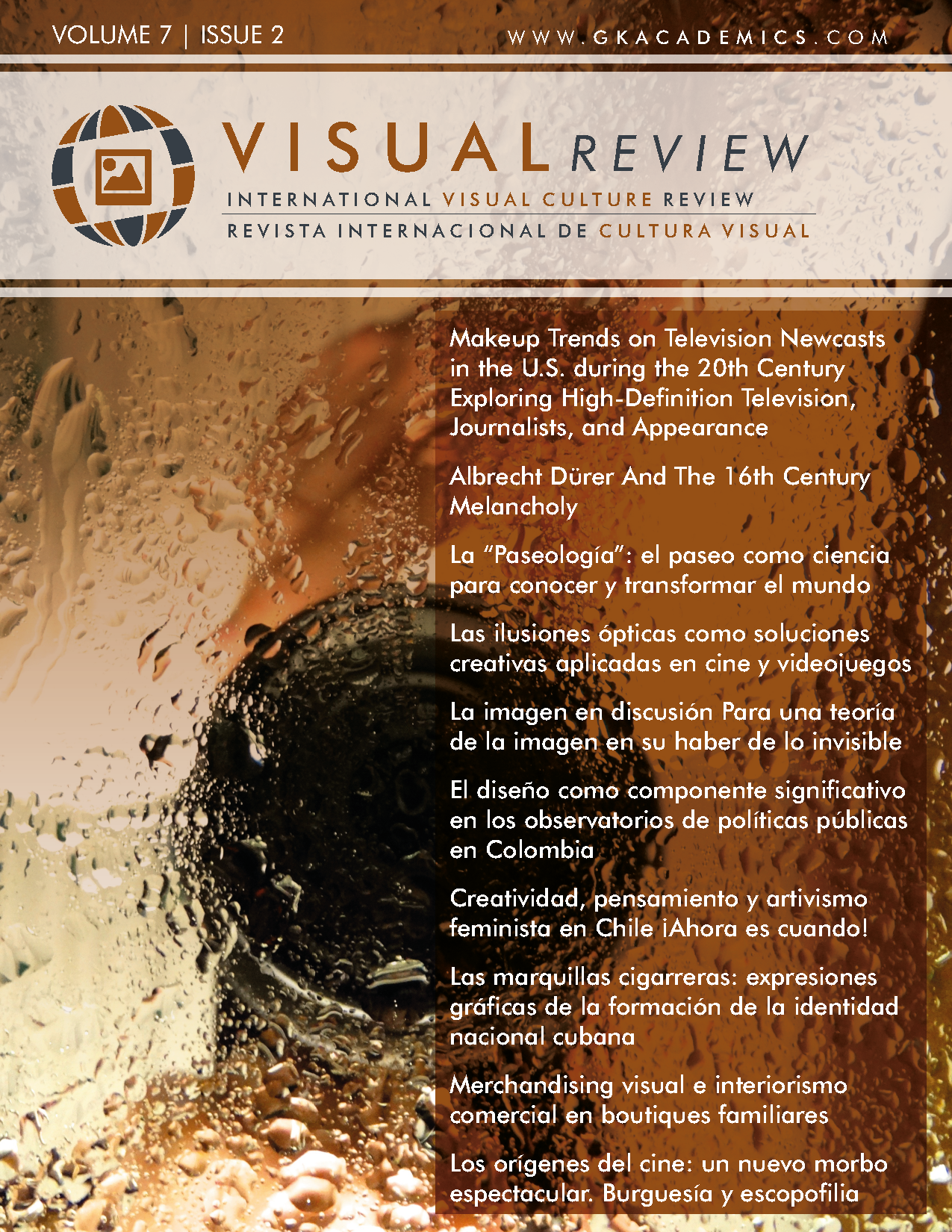Art, Myth and Memory
An Investigation into the Relationship Between Ancient Myths, Collective and Cultural Memory and the Visual Arts
DOI:
https://doi.org/10.37467/gka-revvisual.v7.2647Palabras clave:
Myth, Visual Arts, Collective Memory, Cultural Memory, Aesthetics, Iconology, Contemporary ArtResumen
This paper aims at investigating the relationship between collective and cultural memory, myth, and contemporary art practice. Artists in the past have relied on the power of myth to visually speak to their audience, re-presenting myths in an illusionistic way. Today art is not conventionally telling stories anymore and is disentangled from the need for mimesis. How has the relation between art and myth changed outside the framework of representational art? Is the connection between myth and collective and cultural memory used in contemporary art practice? How do art and myth intersect today?
Descargas
Estadísticas globales ℹ️
|
1784
Visualizaciones
|
1156
Descargas
|
|
2940
Total
|
|
Citas
Armstrong, K. (2005). A Short History of Myth. Edinburgh: Canongate.
Barthes, R. (2009). Mythologies. London: Vintage Classics.
Bergson, H. (1991 [1911]). Matter and Memory. London: Zone Books – MIT.Bruner, J. (1990). Acts of Meaning. Cambridge. MA: Harvard University Press.
Cahill, J. (2018). Flying too Close to the Sun: Myths in Art from Classical to Contemporary. New York: Phaidon.
Diel, P. (1966). Le symbolisme dans la mythologie grecque. Paris: Payot.
Dudai, Y (2002). Memory from A to Z: Keywords, concepts and beyond. Oxford, UK: Oxford University Press.
Farr, I (ed.) (2012). Memory. London: Whitechapel Gallery.
Felixmuller, M. L. (2017). Warburg’s Cultural Psychology as a Tool for Understanding Internet Memes. Philosophy of Photography, 8(1-2): 211-220. DOI: https://doi.org/10.1386/pop.8.1-2.211_1
Forster, K. (1976). Aby Warburg's History of Art: Collective Memory and the Social Mediation of Images. Daedalus, 105(1): 169-176 [online]. Available at: http://www.jstor.org/stable/20024391
Gombrich, E. (1970). Aby Warburg. An Intellectual Biography. London: Warburg Institute.
Halbwachs, M. (1992 [1952]). On Collective Memory. London and Chicago: University of Chicago Press.
Lavedan, P. (1931). Dictionnaire Illustré de la Myhtologie et des Antiquités Grecques et Romaines. Paris: Hachette.
Levi-Strauss, H. (2001 [1978]). Myth and Meaning. London: Routledge.
Loring Wallace, I. and Hirsh, J. (2011). Contemporary Art and Classical Myth. New York: Routledge.
Plate, L. and Smelik, A. (2013). Performing Memory in Art and Popular Culture. New York: Routledge.
Wittkover, R. (1987 [1977]). Allegory and the Migration of Symbols. New York: Thames and Hudson.
Wertsch, J. V. and Roediger, H. L. (2008) Collective Memory: Conceptual Foundations and Theoretical Approaches. Memory, 16 (3): 318-326 [online]. DOI: https://www.tandfonline.com/doi/abs/10.1080/09658210701801434
Yates, F. A. (1966). The Art of Memory. Chicago: Chicago University Press.
Descargas
Publicado
Cómo citar
Número
Sección
Licencia
Los autores/as que publiquen en esta revista aceptan las siguientes condiciones:
- Los autores/as conservan los derechos de autor.
- Los autores/as ceden a la revista el derecho de la primera publicación. La revista también posee los derechos de edición.
- Todos los contenidos publicados se regulan mediante una Licencia Atribución/Reconocimiento-SinDerivados 4.0 Internacional. Acceda a la versión informativa y texto legal de la licencia. En virtud de ello, se permite a terceros utilizar lo publicado siempre que mencionen la autoría del trabajo y a la primera publicación en esta revista. Si transforma el material, no podrá distribuir el trabajo modificado.
- Los autores/as pueden realizar otros acuerdos contractuales independientes y adicionales para la distribución no exclusiva de la versión del artículo publicado en esta revista (p. ej., incluirlo en un repositorio institucional o publicarlo en un libro) siempre que indiquen claramente que el trabajo se publicó por primera vez en esta revista.
- Se permite y recomienda a los autores/as a publicar su trabajo en Internet (por ejemplo en páginas institucionales o personales), una vez publicado en la revista y citando a la misma ya que puede conducir a intercambios productivos y a una mayor y más rápida difusión del trabajo publicado (vea The Effect of Open Access).













